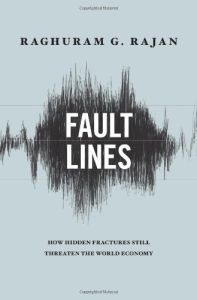Join getAbstract to access the summary!

Join getAbstract to access the summary!
Raghuram G. Rajan
Fault Lines
How Hidden Fractures Still Threaten the World Economy
Princeton UP, 2010
What's inside?
Are global crashes inevitable? Not necessarily. Here’s how to fill in the fissures in the earth.
Recommendation
Dismissing the 2008 recession as an inevitable free market setback might seem simple, but economist Raghuram G. Rajan doesn’t take the easy path. He makes a compelling case that the weak links in the global economy remain both visible and fixable. In a provocative analysis unhindered by ideological boundaries, Rajan argues against such government interventions as propping up the U.S. housing market. Yet he urges Americans to create a more generous safety net for unemployed workers facing a “jobless recovery.” Rajan’s more challenging suggestions, such as rebalancing the international economy or changing global monetary institutions, may not shift policy makers’ actions, but he argues persuasively that failing to do so will mean deeper fault lines in the next crisis. getAbstract recommends his book to those who want a clear-eyed economic analysis.
Summary
About the Author
Raghuram G. Rajan teaches finance at the University of Chicago Booth School of Business. The former chief economist at the IMF, he won the 2003 Fischer Black Prize.

















Comment on this summary